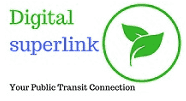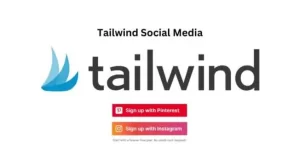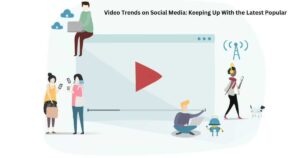“10 Tips for Facebook Ads CPC Reduction Strategies”:
Introduction
- Define CPC (Cost-Per-Click) and its importance for Facebook advertisers.
- Highlight the increasing competition on Facebook and how it affects CPC.
- Set the stage for the need to optimize for reduced CPC.
Every click matters in the world of Facebook advertising. An important indicator to know is Cost-Per-Click (CPC), which tells you how much to pay each time someone clicks on your advertisement. To get the most out of Facebook’s extensive advertising platform and maximize your return on investment (ROI), you need to understand CPC.
The competition is more intense than ever as companies of all sizes are swarming to Facebook in an attempt to reach their target consumers. Your CPC will be directly impacted by this growing competition. Naturally, the cost of reaching the same user base increases as more advertisers attempt to get their attention.
“Learn effective Facebook Ads CPC reduction strategies!” – >>Sign up for Fiverr Pro Today<<
You need to make sure your Facebook ad campaigns are optimized if you want to lower your cost per tap (CPC). By reducing the cost per click, you may push your advertising budget even further while reaching more potential customers and achieving better results. Improved targeting, compelling advertising, and smart bidding techniques could result in lower CPCs and a considerable competitive advantage.
Tip 1: Hyper-Target Your Audience
- Explain the importance of laser-focused targeting based on demographics, interests, and behaviors.
- Discuss avoiding overly broad audiences that lead to wasted ad spend.
This is an analysis of Tip 1, highlighting the effectiveness of hyper-targeting:
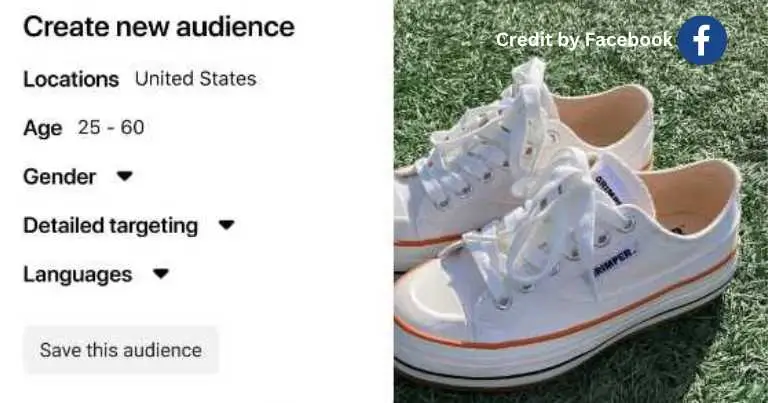
Consider Facebook advertising targeting similar to putting out a net for fish. You’ll catch a lot of fish if you cast too wide, but many of them won’t be the kind you want to retain. Similarly, Facebook’s excessively large audiences result in wasted ad expenditure by displaying your adverts to a large number of individuals who are unlikely to be interested in your goods or services.
Hyper-targeting is the solution to this issue. Pay attention to the particular traits, passions, and lifestyles that characterize your ideal client. With Facebook’s sophisticated targeting tools, you may go further into elements such as:
Demographics: includes age, gender, place of residence, level of education, occupation, status in relationships, and even life events.
Interests: Deep insights into your audience’s passions can be gained from pages liked, groups joined, and search terms utilized.
Behaviors: Previous purchases, internet surfing habits, gadget use, travel habits, and more a wealth of information on human behavior.
Why This Is Important: Ads that are hyper-targeted have a much higher chance of connecting with your desired audience, which raises click-through rates (CTR) and improves conversion rates. Because Facebook promotes relevant ads with reduced costs, these outcomes directly translate into lower CPCs.
For example, a neighborhood bookshop can use laser-targeting to advertise a new release of literary fiction novel to:
- Individuals who live 20 miles away from the store
- Adult consumers with a passion for particular authors, book clubs, and literary pages
- People frequently purchase books on the internet
- By maximizing the possibility of reaching people who are most likely to purchase the book, precision targeting reduces wasteful ad expenditure and lowers CPC.
By maximizing the reach of individuals most likely to purchase the book, this accurate targeting reduces wasted ad spending and lowers CPC.
It looks like you may have a query about using Custom Audiences in your Facebook ad campaigns in an effective manner. The following is a summary of important factors and methods to contact the right individuals:
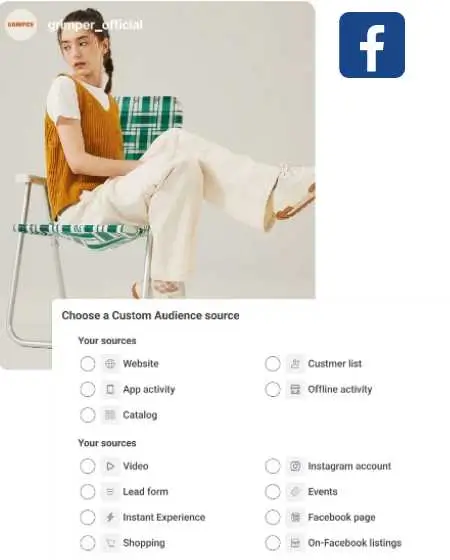
Facebook Ads CPC Reduction Strategies
Considering the Definition of Custom Audiences
Using Facebook Custom Audiences, you can build incredibly targeted audience segments based on individuals who have already connected with your business. The following are the primary resources you can use to create Custom Audiences:
Customer Files: Retarget previous clients or newsletter subscribers by using email addresses, phone numbers, or user IDs.
Website Data: You can target website visitors with customized advertising by installing the Facebook Pixel on your website. Make audiences according to those who have viewed particular sites or taken certain actions (like adding things to their cart).
App Activity: Connect with users who have played your games or used your app frequently.
Offline Activity: Target based on real-world engagement through integrating Facebook profiles with CRM data, event attendance lists, and past in-store purchases.
Facebook engagement: Focus on those who have interacted with your Facebook pages and Instagram accounts, viewed your videos, or opened lead forms.
Important Targeting Techniques for Custom Audiences
Customer Relationship Stage: Divide up your audiences into groups based on their stage of the buying process: are they brand new, have they recently made a purchase, or have they looked but not bought? Craft messages that are relevant to each group.
Interest Alignment: On top of your Custom Audiences, apply pertinent interest-based targeting. Consider focusing on previous website visitors who have expressed interest in comparable goods or companies.
Lookalike Audiences: Facebook’s algorithms can locate new prospects who share similarities with your valued current audiences.
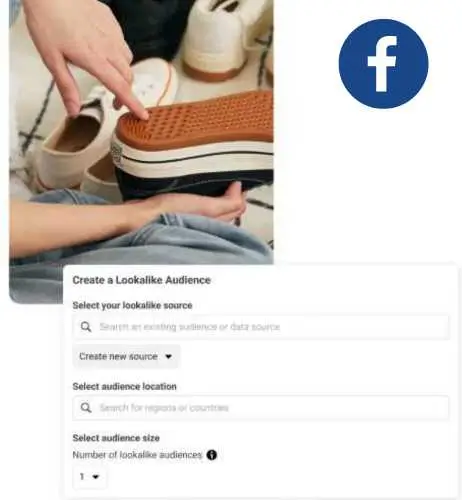
Exclusion Filters: To deliberately exclude audiences, use Custom Audiences. For instance, think about ignoring past customers when concentrating on acquiring new ones.
When to Use Customized Audiences
Retargeting: Reach out to people who browsed particular sites or abandoned carts but did not complete the purchase.
Upselling and cross-selling: Present supplementary goods or services to current clients while keeping track of their previous purchases.
Reactivate customers: by offering them special offers or promotions to win them back.
Hot Audiences: Show new items or brand messaging to those who have interacted with your page or website; they are more likely to pay attention than a generic audience.
Additional Advice:
Keep Relevance: Match your messaging and offers to the requirements and inclinations of every Custom Audience category.
Experiment: Experiment with various targeting techniques and adjust your plan in response to campaign results.
Tip 2: Craft Compelling and Attention-Grabbing Ad Copy
- Outline how powerful headlines and concise, benefit-driven ad copy influence click-through rates (CTR).
- Emphasize the link between high CTR and lower CPC.
Consider the copy in your advertisement as the first thing potential buyers will see. You have a brief window of time to persuade them that your good or service is worthwhile. Essentially, this comes down to:
Powerful Headlines: Your headline should function as your advertisement’s billboard. It must be precise, succinct, and spark interest right away. To grab readers’ attention, use powerful verbs, figures, or queries.
Benefit-Oriented Ad Copy: Highlight the advantages for the reader rather than just listing the features of your product. How would your gift ease their burdens, make their life more enjoyable, or address their problems?
The Relationship Between CTR and Ad Visibility: CTR analyzes the proportion of viewers who view your advertisement and click on it. Ads that promise immediate benefits and have attention-grabbing headlines typically produce greater
Why a High CTR Is Important for CPC: Keep in mind that Facebook aims to maintain user engagement on its network. High-CTR advertisements demonstrate audience relevancy and engagement. Facebook rewards this advertising with reduced CPCs as a result. Users see material they find valuable, and marketers save costs by maximizing impressions with higher-converting ads.
Tip 3: Leverage High-Quality Visuals
- Advocate for eye-catching images and videos that stand out in the newsfeed.
- Recommend A/B testing visuals to determine what resonates most with your audience.
Facebook users are skimming through an infinite amount of stuff, therefore your ads need to visually catch their attention.
Engaging movies and photos grab viewers’ attention and are more likely to halt them in their tracks. This is why you ought to concentrate on eye-catching imagery:
Humans Process Visuals Faster Than Text: The human brain processes images more quickly than text. An advertisement that uses only prose cannot establish an emotional connection or communicate your message as quickly as one that uses a powerful visual.
Beautiful Promotes Trust: Visuals that look professional add a subtle legitimacy to your brand. Careless or low-quality photos convey the opposite message.
Videos Tell Stories: Short, well-produced videos present an unrivaled opportunity to show off your product in use, highlight its advantages, or create discussion.
Your Visual Optimization Key to A/B Testing Does A/B testing rather than speculating about which images will function best!
Run advertisements that are identical save for a tiny change in the visuals or videos. Determine which version generates the most click-through rates and conversions by analyzing the data.
For example, the following may be tested by an online clothes retailer:
Image A: A product image with a simple background
Image B: A picture of a person wearing the item in a lifestyle setting
Video C: A little clip showcasing the adaptability of the ensemble
They may gain data-driven insight into which graphics connect with their audience by testing various variations, which will increase efficiency and eventually reduce CPC.
Tip 4: Optimize Your Landing Pages
- Stress the importance of a seamless transition between the ad and landing page to improve conversion rates.
- Provide tips on making sure landing pages are mobile-friendly and fast-loading.
Think of your landing page as the final destination of the journey that starts with your Facebook ad. If the experience on your landing page is jarring, slow, or confusing, all the effort you put into the ad is undone. Here’s why optimization is critical:
Seamless Transition for Higher Conversions: Your landing page should directly reflect the message and design of your ad. People won’t convert if there’s a disconnect between what they clicked on and where they ended up. Maintain consistent messaging, visuals, and a clear call to action.
Mobile-Friendliness is Non-Negotiable: More people use smartphones to browse than desktop computers. A fast-loading, mobile-responsive landing page isn’t optional – it’s a necessity to avoid users instantly bouncing.
Speed Kills Conversions: Slow loading times cause frustration and lost customers. Keep your landing page streamlined. Use tools like Google’s PageSpeed Insights to diagnose any speed issues and fix bottlenecks.
The Impact on CPC: Landing page optimization directly influences conversion rates. More conversions signal to Facebook your ads are highly relevant to your target audience. In turn, Facebook is likely to reward this campaign with lower CPCs.
Pro Tip: Conduct user testing or split testing to understand how people interact with your landing page and uncover areas for improvement.
Tip 5: Leverage A/B Testing
- Emphasize the crucial role of A/B testing in finding the ideal combination of targeting, visuals, and messaging.
- Suggest testing different elements consecutively for best results.
A/B testing, also known as split testing, takes the guesswork out of optimizing your Facebook ads. Instead of assuming which version of an ad will perform best, A/B testing allows you to put your ideas head-to-head and let the data tell you the winning approach.
The Power of A/B Testing for CPC: The ideal combination of targeting, copy, and visuals often isn’t readily apparent. A/B testing lets you identify which elements significantly impact your CTR, conversions, and therefore, your CPC. Over time, by consistently optimizing through testing, you’ll home in on a strategy that maximizes results while decreasing costs.
Test One Variable at a Time: To get the most accurate insights, isolate single variables within your ad campaigns. For example, you could test:
Targeting: Compare different audience segments (interests, locations, age groups).
Visuals: Test image A vs. Image B, or a photo vs. a video.
Messaging: Experiment with headline wording or calls to action.
Consecutive Testing Wins: Avoid changing multiple elements at once, as this obscures which specific change brought about better results. Test, refine, and test again – it’s the cycle of constant improvement.
Example: A fitness apparel company runs the following Facebook ad tests:
Test 1: Interest targeting “Yoga enthusiast” vs. Interest targeting “Gym training”
Test 2 (Based on the winner of Test 1): Image of the person in yoga attire vs. the image of a person lifting weights
Test 3 (Based on winners of Tests 1 & 2): Headline “Unlock Your Fittest Self” vs. Headline “Unleash Your Power”
Through this methodical testing, they gradually find the best-performing advertising recipe, minimizing their CPC along the way.
Tip 6: Monitor Your Relevance Score
- Explain how Facebook’s Relevance Score reflects ad quality and how it affects CPC.
- Provide actionable tips on improving Relevance Score.
Facebook’s Relevance Score rates the relevancy of your advertisement to your target market on a scale from 1 to 10. Although this score may not seem like much, it has a direct impact on your CPC and advertising success.
The relationship between Relevance Score and CPC: Facebook wants its users to view interesting and useful content.
Facebook considers ads with a high Relevance Score to be “quality,” and as a result, these ads are rewarded with lower cost per click and more visibility.
On the other hand, adverts with low Relevance Scores cost more to run and receive fewer impressions.
What Influences Your Score of Relevance? The Relevance Score is the result of the following three main factors:
Positive Feedback: Positive engagement is indicated by actions such as clicks, website visits, video views, or conversions.
Negative feedback: Your score is lowered by users who hide your ad, hail it as spam, or provide it with a low review.
Expected Click-Through Rate: Based on past ad performance, Facebook determines on the off chance that your audience is likely to click.
Increasing Your Relevance Score
Hyper-Targeting: As we said previously, accurate targeting is essential to achieving a high Relevance Score.
Compelling images and copy: Pay attention to detail and relevancy in your advertisements (see Tips 2 and 3).
Landing Page Alignment: Make sure the transition from ad to landing page is smooth (Tip 4).
Ads Should Be Regularly Refreshed: Avoid advertisement fatigue by regularly producing new versions.
Monitor Processes: To identify areas for improvement, look at both favorable and unfavorable responses using Facebook’s diagnostic tools.
Pro Tip: The Ads Manager Dashboard is where you can view your Relevance Score. The columns labeled “Quality Ranking,” “Engagement Ranking,” and “Conversion Ranking” should be found. Analyze advertisements with low and high scores to find insights that can be put to use.
Tip 7: Experiment with Different Ad Placements
- Explore various placements including Facebook Feed, Instagram, Messenger, etc.
- Discuss the need to identify the placement most effective for your target audience.
Facebook advertising is also displayed outside of the traditional News Feed. Make use of the various placement opportunities to be visible throughout Facebook’s extensive network:
Facebook Feed: Although this is the default position, there could be fierce rivalry.
Instagram Feed & Stories: Target certain demographics with Instagram’s eye-catching platform.
Facebook Marketplace: Identify audiences who are ready to buy as they browse listings.
Messenger: Click-to-messenger links or sponsored advertisements can be used to send direct messages to users.
Audience Network: Use apps and websites that have no connection with Facebook to expand your audience.
Placement = Audience and Intent: People behave and think differently depending on where they are. Understanding which platform works best for your target audience is essential to lowering CPCs.
For Example:
- Local coffee shops may get better results from placing ads in the Facebook Marketplace and Instagram Stories when they use eye-catching imagery.
- A fitness tracker e-commerce site may discover that Messenger’s sponsored content attracts highly engaged users who choose to communicate with the company directly.
The importance of Testing: Don’t count on a placement working its magic. To determine where your CPC is lowest and conversions are highest, test out different advertising possibilities. Remember that an effective strategy for one brand may not work for another.
Tip 8: Utilize Retargeting Campaigns
- Introduce retargeting to “warm” audiences who show prior interest.
- Explain retargeting’s potential to increase CTRs and subsequently lower CPC.
You can target those who have already interacted with you with personalized advertising thanks to retargeting. Compared to someone viewing your advertisement for the first time, this “warm” audience has a much higher conversion rate. Using Facebook’s capabilities, it functions as follows:
The Facebook Pixel: Add an optional bit of code called the Facebook Pixel to your website. It monitors users’ behavior, including product browsing and purchases.
Custom Audiences: Based on specific behaviors, use Pixel data to create audiences that are specifically targeted. Consider focusing on visitors to your price page who left without making a purchase.
Retargeting ad campaigns: Remind these custom audiences of your brand and their previous interest by displaying targeted advertisements to consumers.
Why Retargeting Reduces CPC:
Higher CTRs: Since retargeting focuses on pre-interested individuals, these ads typically yield exceptionally high click-through rates compared to cold targeting.
Increased Relevance Scores: Ads tailored to previous behavior significantly boost your Relevance Score, which Facebook prizes with lower CPCs.
Greater Conversion Rates: Retargeting often yields strong sales or lead generation. Increased conversions signal to Facebook that your campaigns are working, which can lower costs overall.
Example: an online shoe store retargets customers who abandoned their cart with the same product they viewed. A dynamic discount in the ad seems to further entice a click-through and drive the final buy, increasing overall deals from that campaign.
Please let me know if you want any other retargeting tactics explored!
Tip 9: Explore Alternative Bidding Strategies
- Move beyond automatic bidding, suggesting strategies like manual bidding or bid caps.
- Discuss the pros and cons of each bidding strategy.
Facebook’s default bidding option is ‘automatic,’ meaning you essentially let Facebook manage how much to bid within auctions based on your budget. While this is convenient, it doesn’t always allow for the most aggressive cost-cutting. Enter alternative bidding strategies:
Manual Bidding:
How it Works: You manually set the maximum amount you’re willing to pay per click. This strategy offers granular control over your advertising spend.
Pros: Exact budget control, helpful when operating within fixed publicizing costs.
Cons: Time-consuming management, and not ideal for less experienced advertisers.
Bid Caps:
How it Works: You set a maximum bid cap, but Facebook is free to bid lower to bring your average costs below the cap.
Pros: Greater spend control than automatic bidding, while retaining some flexibility for Facebook to optimize results.
Cons: May limit opportunities to win competitive ad barters if caps are set as well low.
Choosing the Right Bidding Strategy
Consider these factors when selecting a bidding strategy:
Campaign Goals: If your priority is cost control, explore manual bidding or bid caps. For maximum conversions within a budget, automatic bidding might suffice.
Experience Level: On the off chance that you’re modern to Facebook advertisements, begin with programmed offering, transitioning to other strategies as you pick up expertise.
Time Speculation: Manual offering requests more consideration. For time-strapped businesses, a programmed or offered cap could be preferable.
Professional Tip: Explore diverse offering methodologies over time to decide what works best for your CPC objectives and publicizing needs.
Let me know on the off chance that you’d like a deeper dive into other offering options like “Target Cost” or “Minimum ROAS”!
Tip 10: Leverage Facebook Audience Insights
- Emphasize the powerful customer insights gained from Facebook’s Audience Insights tool.
- Explain how to use this data to improve ad targeting for future campaigns.
A goldmine of information on the demographics of your target audience and current customers can be found in Facebook Audience Insights. By using this free tool, you may improve the precision of your advertising as if you had millions of participants in a particular group.
What the Audience Insights Show
Demographics: Learn everything there is to know about your audience’s age, gender, location, level of education, occupation, and marital status.
Interests: Find out what websites, keywords, and other brands people interact with regularly.
Behaviors: Gain an understanding of actions such as buying patterns, vacation preferences, device usage, and more.
Using Insights to Create Power to Challenge Cost-per-click
Here’s how to use Audience Insights data straight into upcoming campaigns:
Improve Your Present Audiences: Examine Audience Insights information about your current targeting lists. Do they differ in any way? Should you broaden or tighten your present definitions of your audience in light of the insights?
Find New Niches: Learn about hobbies or populations that don’t fit your preconceived notions. Make use of this to create campaigns that are especially suited to recently discovered niche markets.
Customize Creative and Messaging: To improve the effectiveness of your advertisements and lower CPCs, use the language, pain spots, and cultural allusions discovered via Audience Insights.
For example, a bookstore employing Audience Insights discovers that its main customer base frequently has children under ten and is also a devoted fan of home improvement websites.
These results open the way to: Facebook Ads CPC Reduction Strategies
New Targeting: Family-oriented advertisements that highlight children’s publications and books as suitable presents in addition to their home renovation purchase patterns.
Commercials featuring a Warm Corner: During the busiest times of year for home improvement, bookstores run promotional deals and develop imagery highlighting “family reading time.”
Important: Because audiences are ever-changing, check back often for updates on Audience Insights!
Also, Read- LinkedIn Ends Lookalike Audiences Promotes New Targeting.
Also, Read- 5 Ways Influencer Marketing For Startups: Reach Your Target Audience with Power
